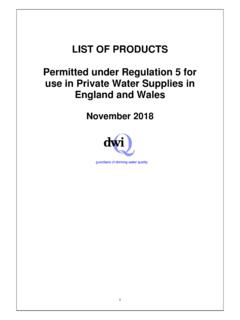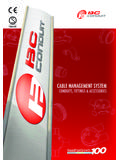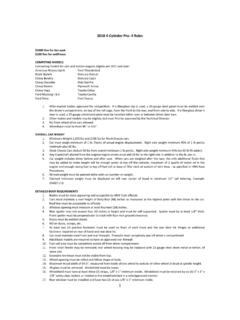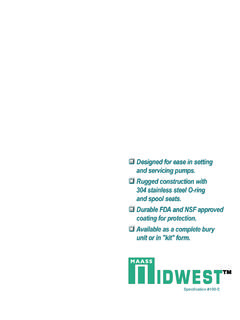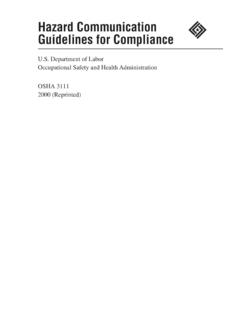Transcription of Aero 1 series manual (working) - John Gjerde AS
1 Specialists in maritime tank venting technique Aero 1 Vent check valves 2010 Instruction and maintenance manual . Version: 8-06-2010 List of Contents The Problem .. 3 The Solution .. 3 2. RULES AND REGULATIONS 4 General requirements.. 4 Design .. 4 Materials .. 4 3. SELECTION OF VALVE 5 Size .. 5 Type .. 5 Different types.. 5 Flame screen .. 5 4. AERO 6 General information .. 6 Details and drawings .. 7 Aero 1 series .. 7 Aero .. 8 Aero .. 9 Aero .. 10 Aero .. 11 Aero .. 12 Aero .. 13 5. INSTALLATION 14 Installation instructions.
2 14 Maintenance .. 14 Mounting High Flow cup in Tank Vent .. 17 Mounting Flame screen / bug screen / rat screen .. 18 TYPE APPROVAL CERTIFICATES 19 Page 3 1. INTRODUCTION The Problem All liquid filled tanks onboard ships have to be vented during filling or discharging. This to prevent excessive pressure or vacuum from building up in the tank, which otherwise would cause structural damage. In Previously normal service-tanks, ballast, fuel, lubr. oil etc. was vented using goosenecks. The gooseneck was normally just a 180 bend, offering no protection for the tanks to seawater ingress.
3 This protection is important, as ingress of seawater to the fuel oil, lub oil or fresh water tanks can cause severe problems. If a vessel is damaged and tilts, the vent pipes might come under water, and it is then important that there is a valve that closes, otherwise this might lead to an uncontrollable flow into the tanks that are vented through the line. The Solution In 1966 the international Loadline Convention stated that this problem had to be addressed. An automatic closing device was to be used to solve these problems. Many types of vent check valves evolved. The valves on the market today, are all more or less using the same principle.
4 It is a construction with a float inside which rises through buoyancy, to close before seawater reaches the vent out/inlet in case seawater comes into and around the vent check valve. This is described in more detail later in the document1. The classification societies followed and demanded these devices fitted to the vent pipes. Rules, regulations and type approvals came into force, and now most classification societies (DNV, GL, LR, BV, ABS, RINA etc.) demand that these devices should be type approved. Following their normal rules it follows that on a DNV vessel the vent check valve has to have DNV type approval, GL vessel - GL approval, also.
5 The International Association of Classification Societies (IACS) released new guidelines for the type approval of these devices in 1994, which the individual classification societies are incorporating into their own rules. The new elements in this type approval program are outlined in more detail in a later section2. Briefly one can say that the operation and the different parameters of a valve are now more clearly defined and the most vital aspects, like tightness and dynamic resistance, are addressed. 1 Aero 1. 2 General information Page 4 2. Rules and Regulations The following is an extract of IACS guidelines concerning air pipe heads from 1990.
6 It defines, in short, the vent check valves. General requirements. Air pipe closing devices where required by the rules, shall be permanently fixed and be of an approved type which automatically: Prevents the free entry of water into the tanks. Allows the passage of air or liquid to prevent excessive pressure or vacuum coming into the tank. Design Air pipe closing devices shall be so designed, that they withstand both ambient and working conditions up to an inclination of 40 without failure or damage. Air pipe closing devices shall be so constructed to allow inspection of the closure and the inside of the casing as well as for changing the seals.
7 In the case of air pipe closing devices of the float type, suitable guides are to be provided to ensure unobstructed operation under all working conditions of heel and trim. Efficient seating arrangements are to be provided for the closure. Air pipe closing devices are to be self-draining. The clear area through an air pipe-closing device shall be at least equal to the area or the inlet. The maximum allowable tolerances for wall thickness of ball floats should not exceed +/- 10 % of the nominal thickness. Materials Casings of air pipe closing devices are to be of approved metallic materials adequately protected against corrosion Closures and seats made of non-metallic materials are to be compatible with the media intended to be carried in the tank and the seawater at temperatures between -25 C and 85 C.
8 Furthermore testing, marking and calculations are described in more detail later in this document. Page 5 3. Selection of valve Size According to rules the vent system shall be calculated to ensure that the capacity is large enough for the tank to withstand the pressure in an overflow situation. A good rule of thumb has been, and still is, that the vent pipe shall have a cross sectional area of times that of the filling pipe. Rules about vent check valves say that the free area in the valve shall be large or equal to the vent pipe. The valves are so designed that they meet this criteria. If the vent pipe is of dimension 100 mm then a DN 100 valve will have an area that is sufficiently large for this pipe also.
9 Type To determine the type of valve required you need to know were it is to be mounted, and the tank content that is to be vented. Different types. There are two main types of valves. There is one for mounting through superstructures3 and one for mounting on deck4. The valve for mounting through superstructures has an overflow pipe through which the tank is vented, and a connection to the ships side. This is normally done by the use of a flange or a weldbut. The valve for mounting on deck does not have an overflow pipe, but rather a cover or screen to stop the direct access of flying water. Flame screen The use of flame screens on vent check valves is creating a lot of confusion.
10 It s with good reason. The classification societies have differing rules and it is difficult always to know what is right. DNV and GL do not require flame screens on any tanks. Lloyds and RINA require flame screen on fuel tanks. Ballast tanks with sacrificial anodes were previously required to have flame screen fitted to the valve, but this is now changed. There is presently work being done to unearth the differing rules and to have these published. One should also be aware that the customers sometimes have a need for insect screens in their valves. This is mainly a requirement in fresh water tanks, even though there are ships were these are fitted to all valves.
